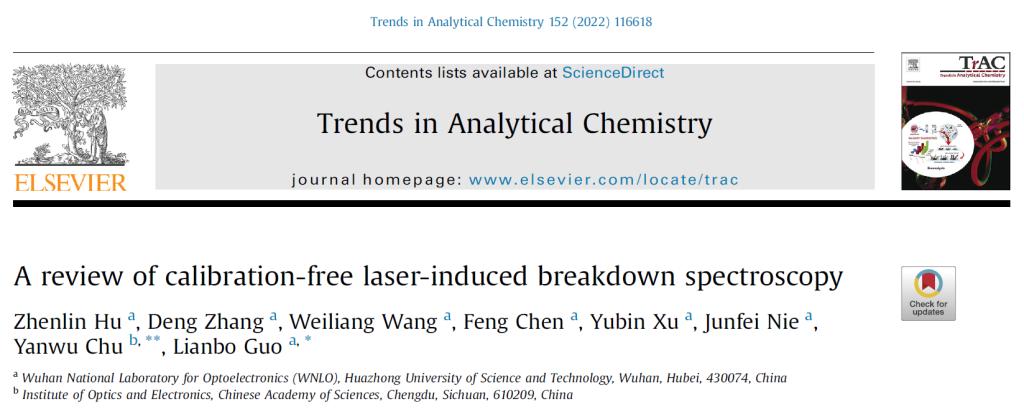Recently, a review article titled A review of calibration-free laser-induced breakdown spectroscopy was published in Trends in Analytical Chemistry by Prof. Lianbo Guo's research team in Wuhan National Laboratory for Optoelectronics (WNLO), Huazhong University of Science and Technology.
Laser-induced breakdown spectroscopy (LIBS) is a well-known elemental analytical technique based on detecting the optical emission from the laser-ablated plasma onto sample surface. The spectral signals in the optical emission can determine the element species and concentrations in the sample. With its unique advantages of minimal or no sample preparation, in-situ, rapid, remote, and multi-elemental detection, LIBS has been applied to many fields such as metallurgy, energy, mining, advanced manufacturing, environmental, monitoring, biomedicine, and space exploration. In particular, the Mars explorations by NASA's Perseverance rover and CNSA's Zhurong rover demonstrate the advantages and capabilities of LIBS in extreme environments.
For quantitative analysis of LIBS, many calibration strategies have been widely used, including univariate calibration, internal standardization, and standard addition. These methods require several standards, containing the gradient target element contents, to build calibration curves. However, LIBS quantitative analysis is dramatically affected by the matrix effect, leading to unsatisfactory results and even failure of quantification. As an important branch of LIBS, calibration-free LIBS (CF-LIBS) is a famous element quantitative analysis method without standards. This method can directly use some atomic parameters to calculate the plasma parameters and elemental composition by using the mathematic models of the laser-induced plasma emission. Hence, CF-LIBS eliminates the matrix effect by taking the matrix into account as a part of the analytical problem and enables direct quantitative analysis without standards, which has great potential for the on-site, long-term monitoring, online analysis, and space exploration tasks.
In this review, the development of CF-LIBS was summarized. It covered a brief description of the basic theory of CF-LIBS, several modified methods, and variants. The applications of CF-LIBS in a variety of fields were reviewed. Furthermore, the quantitative accuracy of various CF-LIBS methods for major and trace elements was summarized, as well as the configuration of instruments and experimental parameters in various typical applications, to help researchers who start the research and application of LIBS and CF-LIBS. Finally, the existing problems of CF-LIBS and its potential were discussed. This review aims to help new researchers quickly master CF-LIBS, understand the research hot-point of this field, and select promising research directions, promoting the rapid progress of CF-LIBS.

This review article was recently published in Trends in Analytical Chemistry. The first author is Zhenlin Hu as a Ph. D candidate. The co-corresponding authors are Prof. Lianbo Guo from WNLO and Yanwu Chu as a research associate from the Institute of Optics and Electronics, Chinese Academy of Sciences. The first affiliation is WNLO, Huazhong University of Science and Technology. This research was financially supported by the National Natural Science Foundation of China.
Paper link: https://doi.org/10.1016/j.trac.2022.116618